Restaurant Slang and Food Service Terminology, Explained
Restaurants are fast-paced and challenging environments, with a countless number of issues that may arise at any moment: table #6 want another round of drinks, the lady on table #22 is unhappy with her cream of tomato soup; the birthday party on the patio outside haven’t had their mains yet. Communication is key here, and the quickest way to get a point across is with specific food service terminology.
In a restaurant, there are so many things to stay on top of and keep in order, meaning that a strong team who can communicate with one another is just as vital as the items listed on the menu. After all, that food won’t just make itself and magically appear in front of the person who ordered it.
Every industry has its own unique set of code words and shorthand messages, maximizing efficiency by spending more time on the job at hand than explaining in great detail what needs to be done. The high-pressure demands of the hospitality industry are no different, where a breakdown in communication can leave customers with the wrong meal, not getting enough of what they ordered, or not getting anything at all. What they will give you in return is a bad review, and that is to be avoided at all costs.
Helping you break down the perplexing catalog of lingo, terms, and phrases encountered in the kitchen and front-of-house, here is the ultimate guide to the food service terms you need to know.
Phrases only people in the restaurant industry will know
5 out: this is interchangeable with any numeral, but you really don’t want it to be any higher than 15, as it relates to the number of minutes to go until a dish is ready to serve. “5 out” is the most commonly employed variant of this phrase, as chefs want to ensure food is cooked and served as quickly as possible; it is usually used when a dish is delayed and needs to be given priority over other, more recently ordered dishes. If you’re a waiter running plates between tables at opposite ends of the dining area, and you hear a chef call out this phrase, you’ll have to be as speedy as possible to make sure the customer isn’t kept waiting.
86: a simple way of saying ‘strike a line through it’, to 86 something is to remove it from the menu or that particular service period. Say you’re in the middle of a lunchtime rush and you run out of steak pies, you would then call out “86 steak pies!” This phrase can also be directed toward banned or unwanted customers, and there are plenty of theories swirling around the origins of this phrase, but none have proved conclusive. The most likely meaning comes from 86 as rhyming slang for “nix”, but there a lot of long-winded stories online that say otherwise.
A
Adam and Eve on a raft: this one is sure to confuse any non-US restauranteurs, given that you would only hear it coming out of American kitchens, but it gets bonus points for being an interesting and unusual metaphor. Adam and Eve on a raft is the expression used when somebody orders two eggs, scrambled or poached, on a piece of toast. An idiom which has been in practice since the 1890s, it comes with its own fun cancellation code: if the customer changes their mind about what to have for breakfast, a server can call out to the chefs, “Shipwreck those eggs!”
À la carte / à la mode: an easy way to get some Gallicisms into your menu, one of these phrases relates to trends and fashion, and the other basically means ‘on top of’. Allowing customers a little more freedom to customize their dining experience, à la carte is when one is able to pick items from a set meal. An example of this would be choosing the grilled haddock from the fish platter, without then having to eat every other kind of fish and crustacean served on that platter.

À la mode, meanwhile, is when you dollop something on top of another; a common example of this is some kind of thick cream or vanilla ice cream scooped on top of a pie or a cake. This phrase also means ‘stylish’ or ‘up to date’, so you could make your restaurant à la mode in two senses of the word by offering more customization of your menus and by giving customers the opportunity to enjoy their desserts with a scoop of something sweet on top.
Alcohol abuse: this one is a little more cheeky and probably won’t be spoken aloud for customers to hear, but alcohol abuse refers to any spilled drinks or otherwise wasted booze. Implying the alcohol has literally been abused, in being knocked over on a tray or across a table, this expression may cause offense to some customers struggling with alcohol addiction, so you don’t exactly want to shout it from the rooftops while on-shift.
B
Back-of-house: this is the area that covers just about everything you don’t want the customers to see. That’s not an excuse for you to forget about tidying it up, but the communal areas, kitchen, locker rooms, broom cupboards, prep area, and storage rooms of the restaurant are all encompassed within back-of-house and are a total no-go zone for customers. For the sake of safety more than anything else, make sure these areas are well organized and kept clean to prevent contamination.
Bar-back: an entry-level position that still carries a lot of responsibility, the bar-back can be an absolute lifesaver on a busy shift. As the bartender stands out front to take care of the drinks orders and collect payment, the barback will be dealing with the detritus left in their wake. Cleaning out dirty glasses and used cocktail shakers, dicing up lemons and limes, emptying out the bottle bins, replenishing the spirits shelf as it’s gradually depleted – these are the small yet vital tasks assigned to the bar-back, to ensure there is enough stock for every customer to get their lips around their favorite drinks.
Bistro: this might sound like a fancy way of saying ‘restaurant’, but bistros have some fairly specific characteristics. A bistro will offer a more rounded social experience beyond strictly dining, as it is usually open all day with a lengthy menu of small plates and a drinks menu offering plenty of hot and cold beverages. As such, bistros are more casual than restaurants, with a café-style atmosphere that favors a faster rate of turnover. A popular origin tale of the word stems from the Russian troops occupying Paris during the Napoleonic Wars: impatient when dining in taverns, they would shout Býstro! at the waiters, meaning ‘quickly’, and so “bistro” became associated with establishments that served their food at a speedy pace.
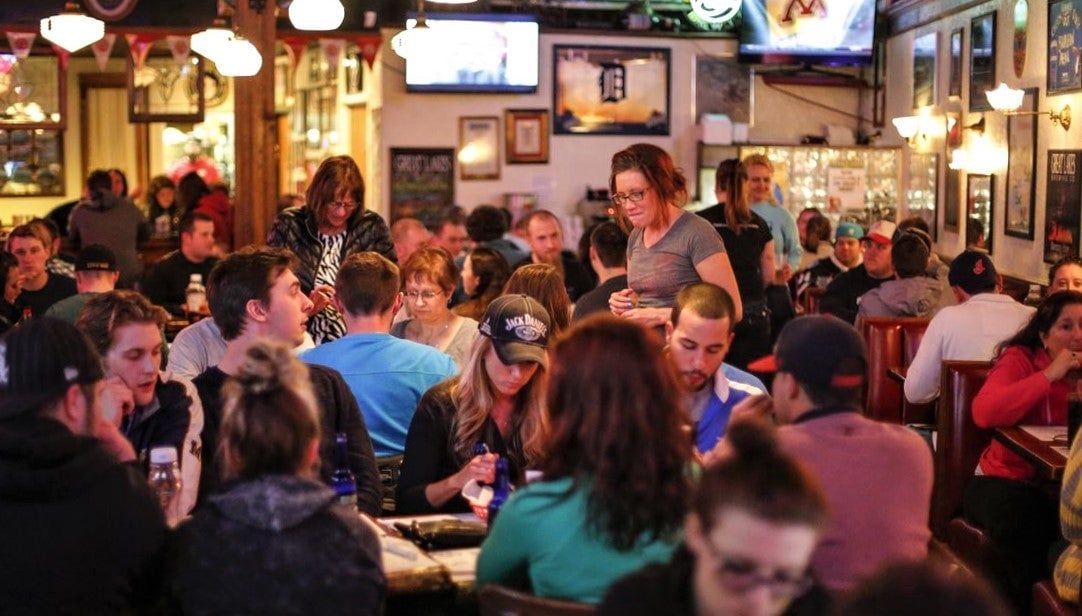
Buried in the weeds: a somewhat confusing metaphor, this doesn’t actually mean what you think it would. The image of something being buried in the weeds would make you think of something abandoned, as though it has been discarded and left for nature to reclaim, but this idiom really means ‘extremely busy’. Rather as one can be buried with assignments if they have an especially heavy workload, the proverbial weeds, in this case, represent a backlog of diners on a busy shift.
C
Chef’s table: this is where having a friend in the hospitality industry really pays off, especially if they’re the ones making the food for you. Having a girlfriend who works behind the bar might get an extra shot of vodka into your cocktail, but being invited to the chef’s table is the pinnacle of any restaurant experience. Separated from all other diners, and ideally situated within the kitchen itself, this exclusive table gives friends of the chef or other VIP guests a clear view of their meal being prepped, cooked, and plated. An added perk is that diners at the chef’s table will likely be given more attention from wait staff – with the sommelier often making suggestions for the best wine to go with their selected meal – under instruction from the manager to ensure they all have the finest evening possible.
Cleared: when asked to go and clear a table, the reality is not as simple as it sounds. Depending on the size of the table, or indeed the age of the diners (toddlers are notoriously messy), you may need to take anything from a pair of empty hands to an 18-litre bus tray to clear up after a party have paid the bill. Scattered bits of bread under the table, pasta sauce on the chairs, a thousand grains of salt and pepper to wipe up – if you’re really unlucky, you may even need to deposit one pile of plates in the kitchen and then come back again in order to clear up a table.
Commis: enrolled in a restaurant apprenticeship that involves a little more than dicing onions and taking the trash out, a commis is a beginner chef who will learn as much as possible about the operations of a kitchen in as short a time as possible. Having just completed their culinary training, or still in the process of learning, they will be assigned to shadow a restaurant’s chef de partie, which is the station chef in charge of specific areas of food production, and be expected to know every aspect of prep and cooking that takes place in that section.
Comped: an abbreviation of ‘compensate’, this is one term you wouldn’t want to get too familiar with - when you comp something, it means you’re giving it away for free. There are plenty of reasons why you might be doing this, some better than others: if a friend of yours, or one of your angel investors, have come in to see how business is doing, you might want to exercise your managerial influence and “comp” them a free drink. Conversely, if a diner is unhappy with how crispy their pizza base is or if the chicken in their Caesar salad was a little dry, you may need to comp them with the promise of a free meal to make sure they come back again.
D
Dead plate: this is one to be avoided as often as possible, as it’s not just bad for business but for the environment as well. A dead plate is a serving of food that has been so poorly cooked or presented or one that may have been left on the side for so long, that it is simply too cold or ugly to present to the customer. Not only a harrowing sight for restaurant servers to see – especially when a busy lunch shift has delayed their break by over an hour, putting a big rumble in their tummy – it’s also a major problem within the US hospitality sector, and the 30,000,000,000 lbs of food waste it generates each year.
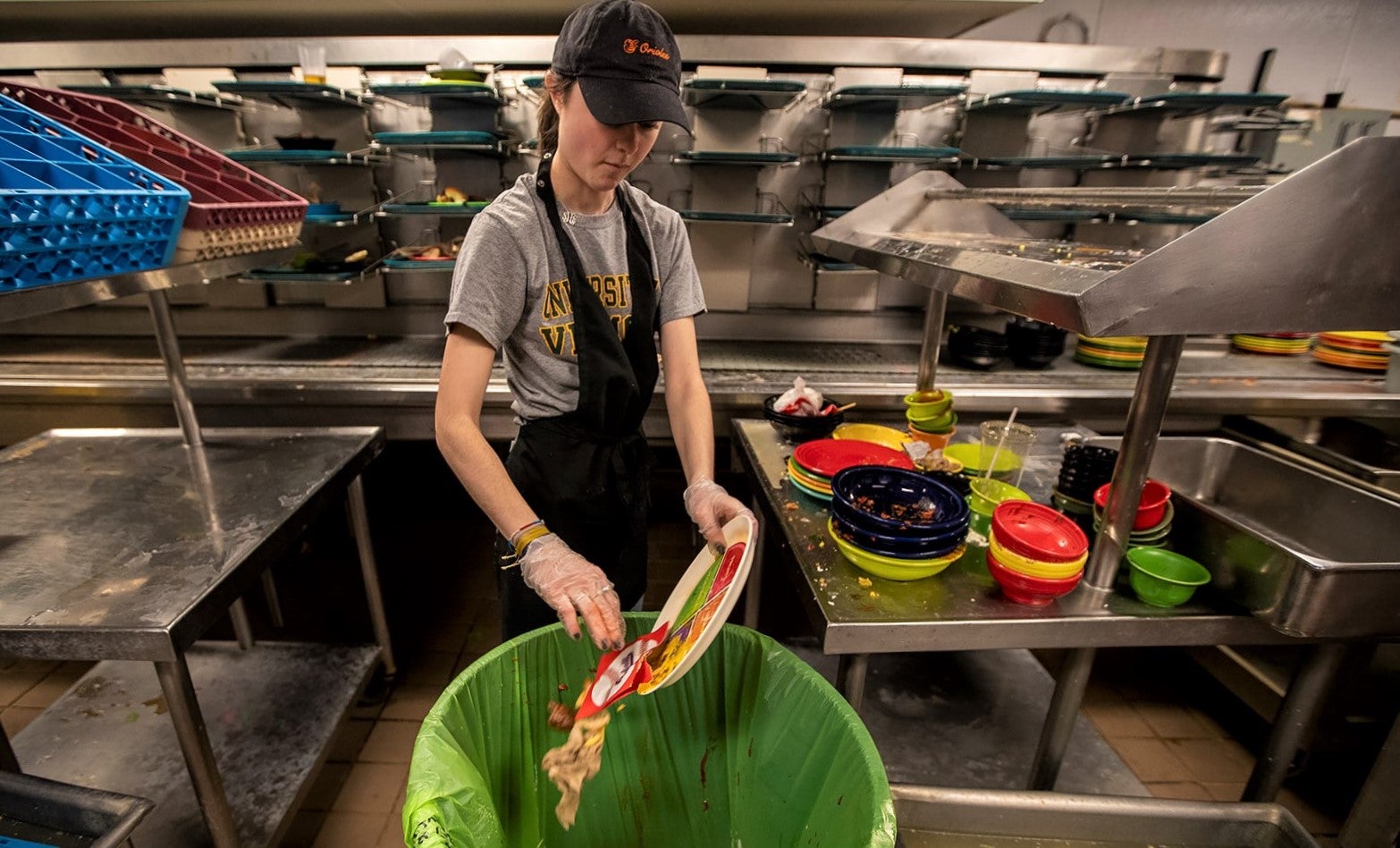
Dine and dash: definitely the most uncool thing you can do to a restaurant is to finish your meal, down your drinks, and then discreetly slip out under the assurance that you’re just going to smoke a cigarette – and then never come back to pay the bill. This frustrating practice costs restauranteurs a sizeable chunk of their revenue and also eats into their dining capacity, as the time taken up by that party who just did a ‘dine-and-dash’ could have been used by more honest paying customers. If nothing else, leaving without paying for your meal is just bad karma, so that should be enough of a deterrent in itself.
Double: depending on how you look at it, this could be a blessing or a pain in the butt. To ‘double’ means to double up on your shifts, usually working two back-to-back, which can be great if you need a few extra bucks in your bank – but can also be the last thing you want to hear in the middle of a week heaped with some already very long working days. Shift doubling is also known as 'working a split' in the UK, as your day is split between a shift in the morning and the evening dinner service, after a one-hour break in the afternoon.
Drop; and drop the check: a two-for-one here, both relying on the same basic action. To drop the check is to deliver the bill to a paying customer – you are literally dropping the check on their table – but the more general “drop” of the two here applies exclusively to the kitchen. If a chef has just about finished cooking a burger patty and is starting to prep the bun and salad, they might say to their colleague, “Drop the onion rings into the fryer.” Dropping therefore means to start preparing the accessory item of a main meal, such as French fries or cheese balls to go with a burger.
DSD (direct store delivery): this is where a supplier will deliver their goods directly to the store purchasing those goods in question, thereby removing the need for that store to have a distribution center. This practice is most commonly employed for perishable items that can’t afford to be left sitting in packing containers for extended periods, so you will most likely encounter DSD when ordering baked goods, fruits, tobacco, pharmaceuticals, and other products that are sold on the basis of their freshness.
E
Early bird menu: a good way to maximize business revenue without getting yourself buried in the weeds during the dinner rush, an early bird menu is a streamlined assortment of dishes usually offered at a lower price than the standard menu. The only catch, as the name suggests, being that you’ve got to get there early to enjoy those deals; typical times for early bird menus are between 5 pm and 6:30 pm, optimized for elderly couples or tourists on a budget, looking for a square meal without the premium price.
Entrée: the definition of this one really depends on what continent you’re on. Outside of North America, an entrée very much takes its meaning from the word it sounds like: it is the entry dish of a meal, as often represented by small starter dishes, appetizers, some kind of soup, or a variety of hors d’oeuvres. Yet in the U S of A – and certain parts of Canada – an entrée actually represents the prize attraction of the dining experience, being the main course as served with a handful of small side plates.
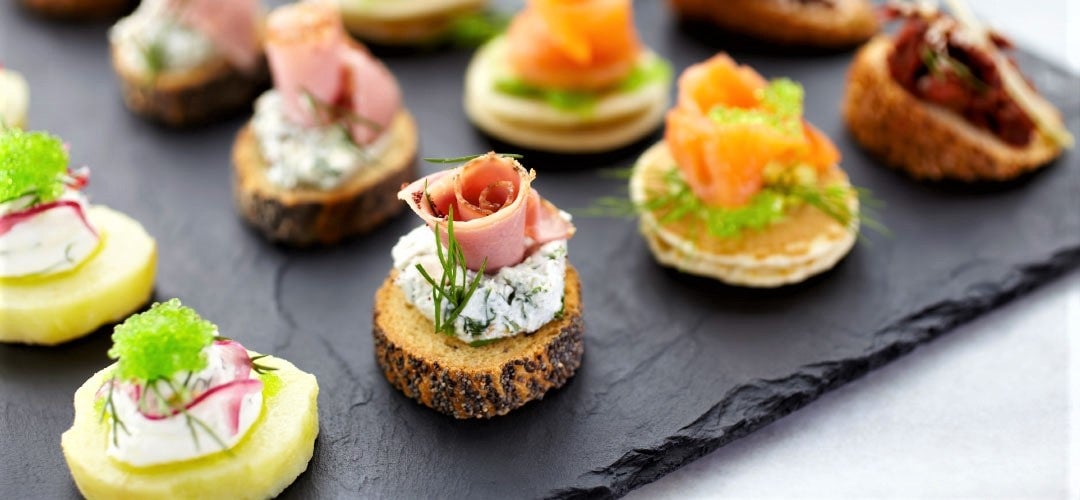
Executive chef: known in the UK by a far less corporate-sounding moniker – simply, head chef – an executive chef is what US restaurants will identify as the most experienced and senior-ranking staff member in the kitchen. This person’s job is to ensure the kitchen is stocked with all ingredients required for that day’s lunch and dinner services, that all prep is done by the other chefs, and that everyone is allocated their breaks between lunch and dinner services. Executive chefs will also have close relations with the manager, often collaborating on menu updates and seasonal stocktake to ensure a decent rotation of new dishes as the year progresses.
F
Family meal: if a restaurant can be considered a family unit, then it stands to reason that every member of staff would come together and share a meal every now and then. This is the thinking behind the ‘family meal’ system used by chefs who will prepare large volumes of food for staff to eat during their breaks. Many staff meals will be served from large pots – such as deep vats of soup or stew – or maybe from the same dish, such an enormous lasagne that can easily be split between a team of 12. These dishes are relatively simple to prepare, ensuring that attention is not diverted away from the food orders of paying customers, but family meals can also be an opportunity for chefs to experiment with new recipes. Using the wait staff as guinea pigs, chefs can determine the success of a potential menu item with the feedback it generates – and even if the dish wasn’t overly impressive, at least the staff trying it out got to eat for free.
FIFO (full hands in, full hands out): this is something any server will doubtless have heard a thousand times, but the FIFO principle is a stalwart of the hospitality industry for good reason. What it means is that whenever a server leaves the kitchen with some of the plates that comprise a large table’s order, they need to collect other dirty dishes and glasses on their way back into the kitchen. Those dirty plates will be left with the kitchen porter to clean – and the server will clean their hands, too – before they take more dishes back out to the dining area. You leave the kitchen with your hands full, you come back in with your hands full: take about two birds, one stone.
Food Distributors:
A food distributor is a third-party company that acts as the middle person between a food producer and a food seller. Good food distributors can help keep inventory levels stable as well as identify which goods are moving fastest and where.
Foodies: like most customers, these can come in one of many classes. An expression used to describe somebody passionate about cooking, or just eating, a foodie is someone deeply invested in the sense of occasion and ceremony surrounding a sit-down meal. They can be enlightening and enthusiastic, asking you all kinds of questions about where the ingredients of a certain dish have been sourced, or they can be a tad overbearing and leap at the opportunity to tell you how the chef should be grilling their burgers or the optimal number of anchovies in a Caesar salad.
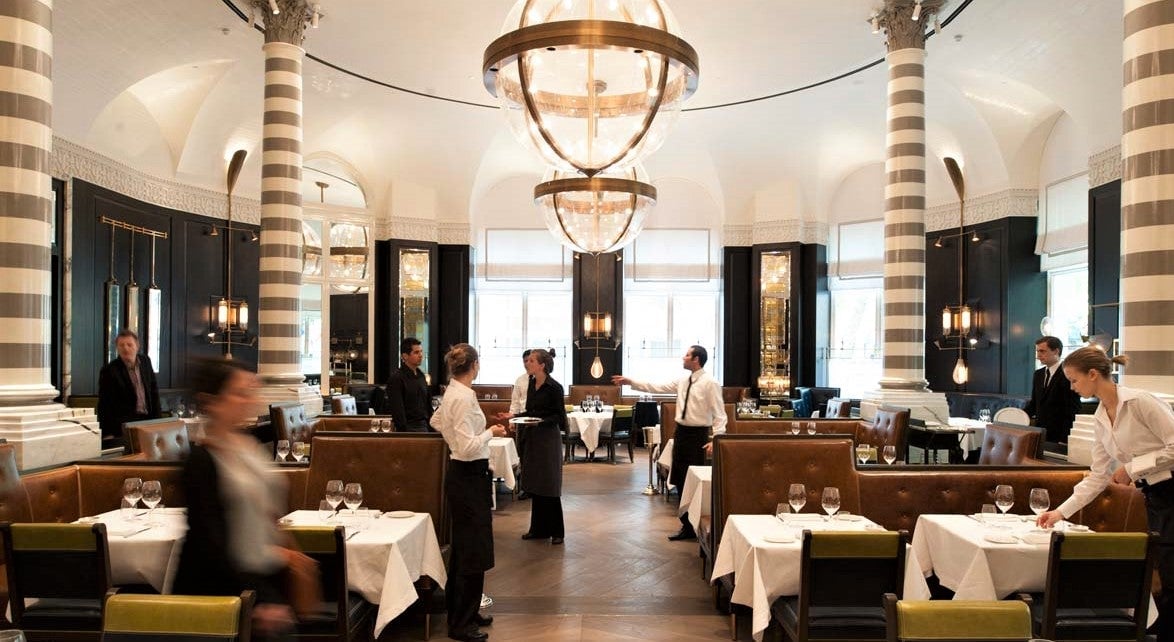
Front-of-house: if you think of your front yard as being the first thing visitors will see upon arriving at your home, the same principle applies to your dining area. Front-of-house is the front yard of your restaurant and will establish a guest’s first impressions of their dining experience. Often abbreviated to FOH, a restaurant’s front-of-house incorporates every space in which staff interacts with customers. The golden rule is to look at everything the way a customer might: discarded napkins, sticky tabletops, scattered bread crumbs, and all of the general detritus of hospitality are sure to leave a sour taste in the customer’s mouth if it isn't cleaned up. You want to give the impression that you care about your workspace as much as you care about your patrons' wellbeing.
G
Garde manger: literally translated from the French as “keeper of the food”, a garde manger is a well-ventilated, chilled storage space similar to a pantry. This is where food items are kept under low-intensity refrigeration and where cold dishes, such as starters, pâtés, and side salads, are prepped for service later in the day. The member of staff assigned to preside over this area is known as the pantry chef or, for a rather more grandiose title, a chef garde manger.
Ghost kitchen: one of the most popular hospitality business trends over the past year, ghost kitchens have been booming in the pandemic. Offering new and existing restauranteurs the capacity to keep their businesses running, even if their designated sites have been forced to close, ghost kitchens are commercially leased cooking spaces that provide all of the utilities and amenities needed to cook and serve food – just without a single square foot of dining space. Ghost kitchens come in a variety of different forms and sizes, and our blog post here will tell you everything you need to know.
Guest initiated arrival: as a means of informing the restaurant that they are en route, guests can share an estimated arrival time should they be running late for a reservation. While this practice is commonly exercised via phone call, with the party in question simply ringing the eatery in which they are scheduled to be dining, the specifics of "guest initiated arrivals" require that a text message or some other form of written communication is shared with the manager.
H

Happy hour: one of the simplest and most effective restaurant marketing trends you can find, a happy hour is a designated period of service in which certain drinks are offered at a discount in order to spike sales up. The happy hour usually commences around the same time as the dinner service, with the influx of customers brought to your business by the promise of cheap booze subsequently compelled to stay put and enjoy a meal on the side. Some restaurants opt for a broad sweep and offer discounts on every drink available, and even extend their supposed happy hour over a span of 120 minutes, but the basic principle applies no matter what: cheaper drinks, more customers.
Hockey puck: no, it’s not an invitation for the chefs to get a couple rounds of hockey in between the lunch and dinner services; a hockey puck is actually something you want to keep far away from your kitchen. This colloquialism refers to a burger patty that has been so badly overcooked that it bears a striking resemblance to the small black disc used in games of ice hockey, so you really wouldn’t want that one to end up in a customer’s burger buns any time soon.
I
Interim menu: these smaller, all-day menus are commonly found in bistros and other more casual eateries, and they can make a big difference to your restaurant's profit margins. As the kitchen closes down from the lunch service and starts to prep for the dinner rush, or if some of the chefs clock out for their break, businesses can employ an interim menu of easy-to-prepare dishes that won’t put any strain on the kitchen, keeping customers happy with afternoon snacks to carry them through until supper time.
J
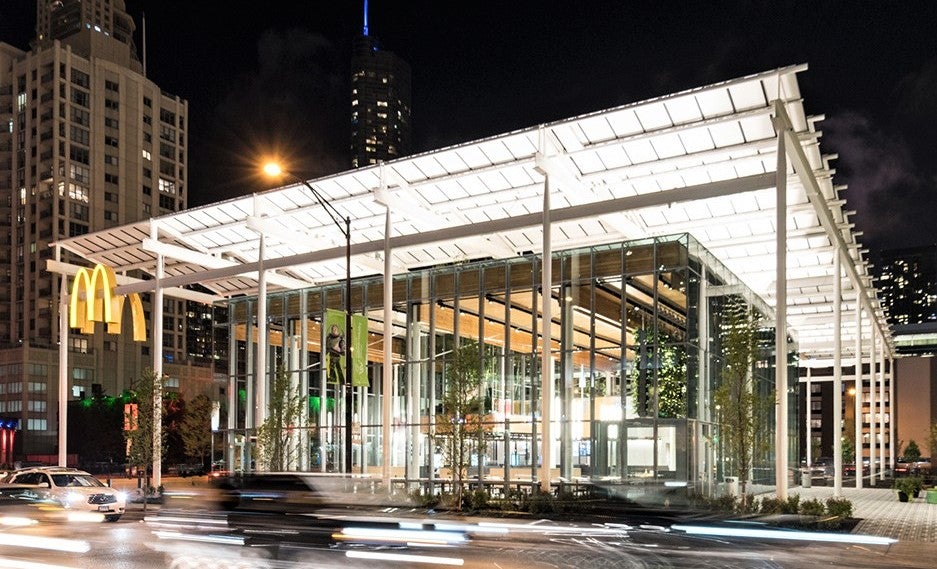
Jewel in the crown: this term relates to restaurant chains more so than individual businesses, as it is only applicable with several stores to choose from. Essentially, the jewel in the crown is the flagship store of a business chain or empire, often characterized by its size, historical importance, or unique design attributes that distinguish it from other, more mundane stores in that chain.
Jumpin: an unusual piece of hospitality lingo, referring to something as “jumpin” is the same way as calling it a ‘happening’ venue, a place where there is a whole lot of activity taking place, with so many people crammed inside it looks as though the whole building itself has leapt off the ground.
K
Kid’s menu: a way to keep families and the environment happy, the kid’s menu offers a variety of basic dishes well-suited to even the pickiest of toddlers, with portion sizes designed to limit food waste as much as possible. Typical dishes you could expect to find on the kid’s menu include sausages and mashed potato, cheese and tomato pasta, or chicken goujons with steamed vegetables, ensuring a reasonable ratio of tastiness to nutritional value. But even if the plates aren’t licked clean at the end of the meal, the amount of food served in the first place means there won’t be as much food wasted if a young diner were given a full-sized adult plate to pick at.
Kill it: for those customers who really know how they want their steaks, the practice of ‘killing’ something involves overcooking it to the point of oblivion, and all at the customer's request. While this may be at the heartbreak of some chefs, who despair at seeing certain dishes ruined by being excessively overcooked, ‘killing’ something does at least make its preparation a fairly straightforward venture. All you need to do is very nearly burn it, and then plate up – the customer can’t really complain about that when they’re literally asking for it like that.
K.I.S.S.: An acronym that is universally applicable to just about any industry, K.I.S.S. stands for ‘keep it simple, stupid’ and is a good way to keep things moving quickly. If you want to streamline a process and heighten business efficiency, keep K.I.S.S. in mind. A good example of this is when dealing with customers, especially if an order has been confused or a ticket has been lost. Rather than go into a big round-about story, just say the order has been delayed, it’s being prepared now and will be ready in four minutes, can I get you another drink in the meantime? Simple.
L
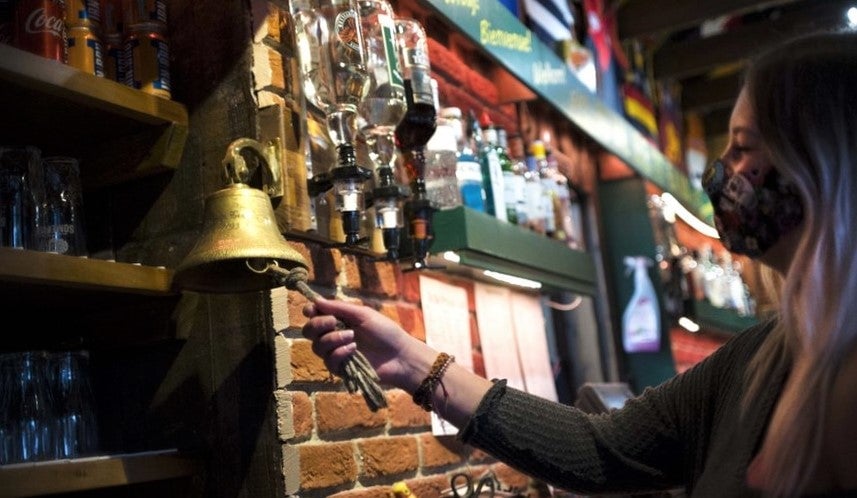
Last call: drinkers, beware! As the night nears its end, you’ll be sure to hear this expression bellowed across the patio by one of the louder members of staff, or you may have your server approach your table if you are still eating, politely informing you the bar is soon to close and that now is the time to make your last orders. This will be called around 10 or 15 minutes before the business is scheduled to cease trading, giving you enough time to join the queue and get another round in before heading home. Fun fact: many pubs in the UK have a special ‘closing time’ bell, announcing with a bong the bar and kitchen are closed and no more orders will be taken.
Line cook: similar to a factory worker standing at the conveyer line, a line cook is tasked with small and repetitive tasks that make a much bigger difference. Prepping ingredients and assembling small sides that accompany larger dishes, a line cook might be asked to slice tomatoes and shred lettuce leaves for hamburger salads, or maybe cut bread to accompany soups or mussels. Often entry-level chefs looking for more culinary experience, line cooks are of great importance to the smooth operation of any restaurant.
M
Maître d'hôtel: commonly abbreviated to Maître d' (and usually Americanized to “may-ter dee”), the Maître d'hotel is the face of your business. Serving a similar social role to that of the manager, the Maître d' is stationed at the front door to greet customers and ask for their reservations or to allocate them an available table. While not all restaurants utilize a Maître d’, they are often indicators of an establishment’s price bracket, for less costly restaurants adopt a more general approach to customer greeting: whatever waiter is free at that moment will go over and assign a table to the newly arrived diners.
Meat and three: a staple of Southern cooking, the “meat ‘n’ three” is a cafeteria-style meal that changes throughout the year depending on the seasonal produce available. A set menu wherein you select one meat from the variety on offer, then pair that with three sides such as potatoes, corn, wings, and a whole host of other vegetables, the meat ‘n’ three is an indulgent showcase of Southern comfort food sure to fill the hole in your belly. These dishes are usually promoted within special deals and allow restaurants to push certain seasonal ingredients to their clientele at an attractive rate.
Monkey dish: you’ve seen it a hundred times in films, as the guy at the bar drowns his sorrows with a bottle of beer and a handful of peanuts. Well, the little bowl he’s scooping his cashews out of is called a monkey dish, though you won’t be likely to find one of those on a bartop any time soon – even before the pandemic, these things were a veritable petri dish of germs and bacteria after being passed around between customers.
N
No-show: a major annoyance for restaurants, a no-show is a guest or party of diners who have made a reservation and fail to show up. This is particularly frustrating on busy evenings, where you may have a high volume of walk-ins (see below for the definition of that one) wanting to enjoy your services, only to be turned away because the vacant table you have in the dining area will supposedly be occupied by a party of four. You could ask your walk-in guests to come back in 15 minutes, to see if the table is still free, but if they say no you will have lost business twice over: the reserved party never turned up, and the table you held for them couldn't have been used by your unannounced walk-ins. Highly irritating.
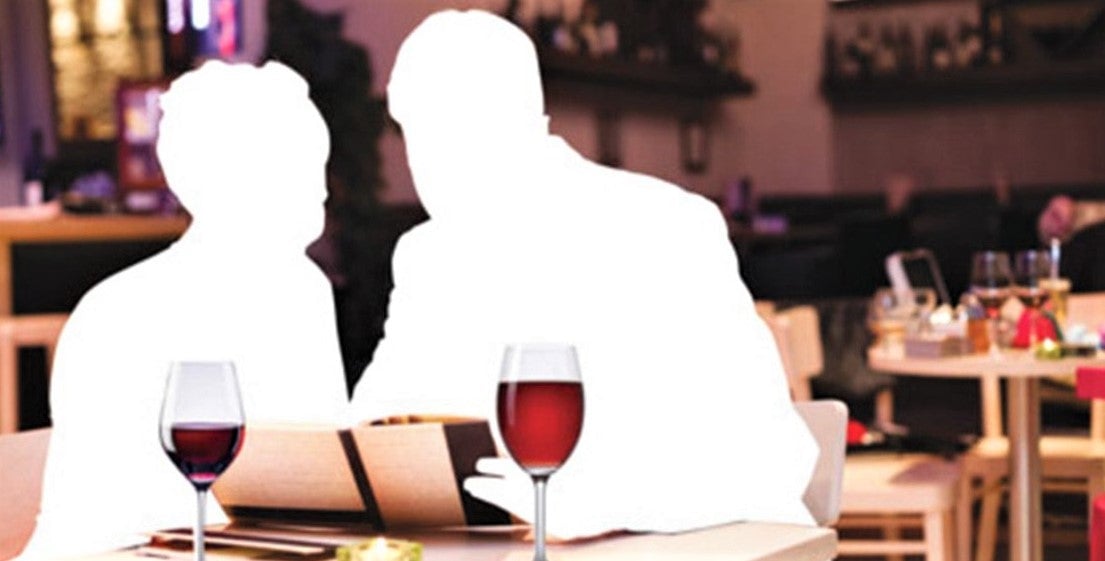
Nuke it: to “nuke” something means to microwave it, thereby subject said item to the radioactivity one would find in the aftermath of a nuclear explosion (but maybe not quite to that extent). This is a phrase you hopefully won’t come across too often in the kitchen, as it’s obviously preferable that most of your cooking is done with ovens and gas-fired stove tops, not with a microwave.
O
Off-premise: a fairly literal phrase here, off-premise is the identifier given to dishes that are not intended for consumption within the restaurant itself. As such, it is another way of saying ‘takeout order’ as they are the items that will be eaten at the customer’s home or at any other kind of off-premise venue removed from the restaurant itself. It's very important to mark food orders with this identifier, as the chef may plate up a lasagne and side salad only to be told at the last minute that it was supposed to be dispatched in a takeout box. A waste of time and a waste of a clean plate.
Omakase: translated from a Japanese expression meaning “leave it up to you”, omakase is a practice whereby customers entrust their chefs to make recommendations for them. Inverting the process of ordering specific items off the menu, a la carte, this allows diners to enjoy their meals in a way that best suits the kind of experience desired by chef for their clientele. It’s a win-win in that regard, affording chefs the chance to showcase a specialty dish while giving customers the chance to try something they may not have ever picked themselves.
One star: something to be avoided at all costs, a single star can be a rating as well as a noun. A “one-star” relates to those customers who, for whatever reason, have taken it upon themselves to be as unreasonably demanding as possible, looking for any excuse to dump an unfavorable review on your restaurant website or Facebook page should their exacting wishes not be met. The reasons cited for these bad reviews are often minor or simply out of your control, but are not often recognized. A busy lunch rush, for instance, resulting in some meals being dispatched after a 25-minute wait time, could be enough for a one-star to decimate your restaurant with some explosively critical feedback.
On the fly: running a restaurant involves a lot of thinking on your feet, as you never know how many extra guests may be added onto a booking or when a customer might suddenly remember they have a life-threatening allergy and that the dish in your hands might cause their throat to swell up like a balloon. Working in hospitality means you often need to make plenty of last-minute changes, so many wait staff will be familiar with changing an order on the fly, should a diner decide they want extra onion rings with their burger or any other kind of snap-decision changes to their order. Keeping the customer happy means keeping up to speed at all times, so be prepared to work on the fly every now and then.
P

Party: this can be taken literally, as meaning an actual celebratory party, but in restaurant terms ‘party’ is the collective noun of a group of guests, rather like a flock of crows is identified as a “murder” or how an assortment of fish will be classified as a “school”. Somewhat confusingly, however, you can have a party of eight come into your restaurant to attend the birthday party of someone in their crowd, so you’ll need to be clear which party you’re talking about when you lay out the reservation cards before the dinner service. You don't want an ordinary table going to the party of party guests!
Pick up: the practice of picking up does not have anything to do with asking your patrons out on a date, but instead refers to the handover of responsibility from one server to another. If one of your staff goes on their break, you may ask them to confer with their fellow server and explain the state of the tables under their care – table #8 are still waiting on their mains, for example, while table #13 have been checked on and they are happy with their starters, and the lady on table #2 wants another carafe of water. This kind of information breakdown ensures customers get what they need, they are not asked the same questions twice, and that the changing of the guard on the restaurant floor happens as smoothly as possible.
Push: when restaurants buy in seasonal products for certain times of the year, they will want to cover their expenses as these items may have earned their place on the specials menu at a high cost. To ensure restaurant owners aren’t buried by their overhead, they may assign front-of-house staff to make recommendations on certain items so that customers feel compelled to try them for themselves. This process of 'pushing' an item is also known as upselling, which has the added benefit of leaving customers impressed by how knowledgeable your staff seems to be on interesting and unusual menu items, and how successfully they'd had it sold to them. Very much a win-win here.
Q
QSR: an abbreviation of "quick-service restaurant", QSRs are the eateries that place greater emphasis on the speed at which food is prepared than the experience of actually eating it. While many QSRs will have seating areas for their patrons, these usually offer little more than bolted-to-the-floor chairs or communal benches; all the condiments and cutlery you want will be found behind the counter, so be sure to ask for some of those before you take your seat. QSRs are often cheaper than their FSR (full-service restaurant) counterparts, as the ingredients used are often not as fresh given that they are taken out of a freezer and dunked into a fryer. Speed and convenience over quality and freshness is the name of the game here.
Quote: when allocating tables to guests turning up without a reservation, a quote is the approximate length of time they will need to wait until a table becomes available. For restaurant managers, this can be a tricky line to walk at peak times, as you don’t want to disenchant your customers with a waiting time encouraging them to find their evening meal somewhere else, but you want to steer clear of unrealistic time frames that promise a free table before the existing party have paid the bill. A quote is also a kind of receipt, the proof of payment attached to an order if you were to receive organic produce from a supplier, for instance.
R

Regular: someone who will keep coming back no matter the circumstances, regular customers are the lifeblood of any restaurant and a badge of honor for a newly opened business. If in your first six months of trading, you have managed to secure at least one of these guardian angels of the hospitality industry, you can be safe in the knowledge that you have a good thing going. A regular customer is confirmation that the service you provide, the food on your menu, and the atmosphere of your restaurant are so consistently impressive that diners will want to keep coming back. Achieving this kind of customer loyalty is a powerful force for good within an industry that, as we have seen over this pandemic, is vulnerable to change.
Rotisseur chef: an example of the aforementioned chef de partie, a rotisseur chef (or “roast chef”) is tasked with sourcing and preparing all of the braised and roasted meats of a restaurant menu. Required to know where to find the best-quality meats among local suppliers and retailers, the roast chef will also need to be skilled in the cooking of meats at the right temperature for the correct span of time, ensuring they retain as much flavor as possible while providing the desired degree of tenderness. Many roast chefs will therefore be experts in the challenging art of meat braising, in which the exterior of the meat joint is seared over a fire – therefore locking in moisture to avoid becoming dry or tough – and then cooked in the oven for the length of time required by that joint's weight and size.
Runner: if you’re new to the hospitality trade, you will likely be keen to prove yourself to your employers. After all, hospitality is one of the accessible industries to break into, with a skill set that can be employed all over the world, so it helps to work your way up by taking on as much as you can. And a restaurant runner is sure to do exactly that. Rather than be assigned tables like a designated server, the runner will continually dash back and forth between the kitchen and the dining area with plates of food, going wherever they’re told. A great way to learn your way around a restaurant and keep yourself fit.
S
Sacked: if you’re lucky, this is not a phrase you will directly come across yourself. Simply put, to be sacked – or to ‘get the sack’ – means you’re being fired, though there are plenty of other euphemistic ways your boss may wish to phrase this (“we’re letting you go”, or “we’re moving in a different direction” being some well-worn examples). The epistemology of this phrase stems from 17th century France and likely alludes to tradesmen of the time, who kept all of their equipment in a bag or sack, which would then be handed back to them as they were dismissed from one job and went out yonder in search for another.
Scripting: this is a very simple tactic for impressing customers, thereby encouraging them to be more adventurous with their food orders, but also a practice in which most restaurant staff should be very skilled. Scripting is the process whereby servers will recite a ‘script’ that quickly describes any item on the menu, doing so in such a way that customers are not only left in awe of how knowledgeable the staff are but also desperate to try this dish for themselves. It always pays to ensure your staff is clued in to the food being served, as it not only makes the dishes on offer far more appealing but also avoids the embarrassment of having a server stumble in front of overzealous foodies and their innumerable questions.
Server: a term most commonly employed in the US, a server is a waiter or waitress who will be assigned a specific party of diners during a particular service period. In other territories, such as Australia or the UK, a waiter/waitress may be assigned a certain section of the restaurant – tables 1 to 12, say – yet a server will be given their set party for the duration of their stay, ensuring they are given a unique, focused customer experience. They feel special being waited on by just one person, nurturing a relationship that may then materialize in some well-earned tips for that server.
Shelf life: referring to the length of time in which an item can sit on the shelf before it is no longer fit for use, an ingredient’s shelf life is obviously an important consideration when running a restaurant. As a business owner, you will naturally want the best-quality products for your customers, but you want them to be kept safe more than anything else. Serving items past their use-by date is a quick way to run the risk of giving your clientele all kinds of tummy bugs, and some bad reviews to go with it, so make sure you familiarize yourself with the shelf life of all of your stock before any of it ends up on the kitchen chopping board.

Sommelier: this is something of a status symbol for any restaurant. The sommelier is an in-house wine expert, gifted with an encyclopedic knowledge of all wines available for sale, whose job it is to recommend certain wines to customers based on what they have ordered. Able to determine the characteristics between a cabernet shiraz and a glass of Montepulciano d’Abruzzo, the sommelier can be the prize attraction of a restaurant’s front-of-house staff, winning diners over with their depth of knowledge and endearing interest in this sophisticated form of alcohol. Due to the high levels of customer interaction required by the job, most sommeliers can be very charming – and persuasive, when pushing a more upmarket bottle of wine – thus proving to be something of a highlight in many guests’ dining experience.
T
Three-martini lunch: optimized toward lawyers or industry hotshots with deep pockets and time to spare, a three-martini lunch is the moniker applied to long, often pricey afternoon meals in which all manner of business will be discussed and proposed. They say that a healthy dose of liquid courage (i.e. alcohol) does wonders in greasing the wheels of any kind of deal or business transaction, and this is very much the thinking behind the three-martini lunch, an expression said to have entered the cultural lexicon via a 1954 edition of The Atlanta Constitution. Perhaps why this kind of midday meal is so favored by moneyed businessmen comes courtesy of its attractive tax-deductible qualities, in which all expenses incurred can be filed for reimbursement in your tax returns.
Ticket: a trinket of restaurant service worth so much more than the sum of its parts, an order ticket is something you really don’t want to lose track of or get mixed up! A small piece of thin paper printed with every item of food ordered by a specific table, an order ticket is very much the thread that weaves the fabric of a restaurant together. After all, most of your customers will have come in to enjoy a meal and soak in the atmosphere, so nothing will burst their bubble faster than misplacing the little pink slip of paper with their dinner selection printed on it. Keeping the customer happy means keeping a very close eye on their ticket.
Tip: most famously practiced within the US hospitality industry, tipping is the process in which customers will pay a certain percentage of their bill to the server who brought their meals to them and generally ensured a pleasant dining experience. Standard tipping rates sit between 12% and 25% of a customer’s total bill, supplementing a large portion of US servers’ wages – though it hasn’t always been that way. When the custom reached the US after the Civil War, following the increase of European travel undertaken by moneyed Americans keen to flaunt their customary learnings, it was initially frowned upon as un-democratic for how starkly it demarcated rich from poor. Oh, how times have changed.
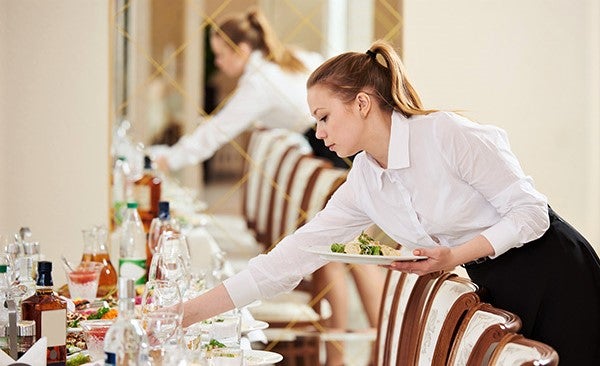
Turning tables: not quite as ominous as the practice of turning the tables on an adversary, in which the circumstances of a conflict pivot in your favor, turning tables in a restaurant is rather a more sedate affair. What it means is that, as soon as a party of guests leaves, a member of front-of-house will rush in to clear their plates and wipe the table down. If a floor manager asks their staff to turn tables as often as possible during a shift, it can also mean that some diners will be allotted certain time windows to maximize the number of customers who can order a meal throughout the night. Depending on the capacity of the restaurant, and how busy it is, these turnover windows typically sit between an hour and 90 minutes.
U
Up: not to be confused with the Pixar movie featuring an old man in his flying house, if something is 'up' in a restaurant kitchen, it means it’s ready to be plated, served, or otherwise dispatched. Just as something can be ‘up for grabs’, an item will be up if it’s time to be put into a takeout bag and delivered to a customer. ‘Up’ing something can also extend to your staff members: if you tell a server, “You’re up,” it can mean that they are needed front-of-house and can stop helping the kitchen porter with putting dishes away in the middle of a hectic dinner rush.
V
Value meal: often referred to as a meal combo, a value meal is a staple of quick-service restaurants - and something of a foundation stone among many restaurants’ revenue streams. In the form of a main dish, a side, and a drink, value meals offer exactly what their name promises by giving you an assortment of items at a total cost lower than their individual prices.

VIP: an acronym for “Very Important Person”, the VIP among a restaurant’s guest list could represent anyone from a friend of the manager to a local celebrity or influential food critic. Any server assigned to look after a VIP will be expected to do whatever they can to keep that individual or small party happy, as they will often be big spenders that the restaurant owner will of course wish to welcome back for future visits. As flagrantly elitist as it may seem, giving somebody VIP treatment could fare well for the reputation or revenue of that establishment.
Void: this is something new restaurant staff members will become familiar with very quickly, as voiding is the process of removing it from a customer’s bill and can be the result of many different scenarios. The most likely cause is that a server, not yet used to the food ordering system of a new restaurant, may have processed the wrong menu item or even put it through the system twice. Beyond that, a customer may decide at the last minute to remove a side from their order, or even request a refund if the dish they ordered is not cooked to their liking. As such, voiding an item from an order is an easy enough process to master, but is not one you want to be doing often.
W
Walk-in: a walk-in literally does what it says on the tin. These are the couples or small groups who, having wandered around town that afternoon or evening, just so happen to stumble across your restaurant and walk in without a reservation. The poor soul dispatched to go and greet them will then have to politely assure them that yes, of course, they will see if they can find some space for them, playing a game of hopscotch with the bookings system to move tables around, in order to give this unannounced party of walk-ins a table to perch around before the next reservation claims their seat.
Wax a table: as though VIP guests weren’t already enjoying their bespoke, high-tier service as friends of the manager, or by being generally entitled to any other kind of specialist treatment – a celebrity, say – the act of waxing a table is to put an extra bit of shine into the dining experience. The most common example of waxing a table is by sending out small side plates or aperitifs that won’t be found on the menu, being a favorite dish of the chef, and then neglecting to charge the guests for this delicious surprise.
Well drinks: though not quite as bad as the name would suggest, well drinks aren’t actually beverages derived from whatever cloudy liquid is dredged up from the bottom of a well – but they certainly aren’t the best thing you could find on a cocktail menu. Simply put, “well drinks” are the mixed drinks made with the cheapest house liquors on offer from behind the bar, catering to customers who aren’t particularly fussed as to the quality of the alcohol they’re ordering when it’s going to be doused in lemonade or some kind of sugary syrup.
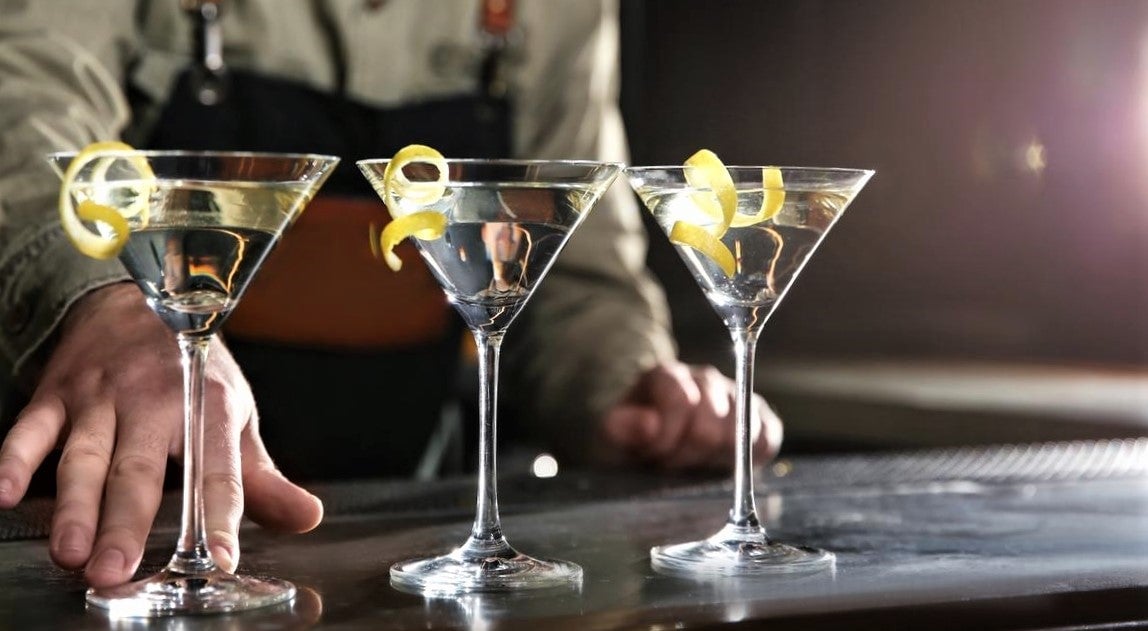
Wheelman: a colloquialism for ‘expeditor chef’, a restaurant’s wheelman is the middleman between front- and back-of-house, ensuring that the events taking place in the dining area are efficiently communicated to the kitchen staff. The wheelman keeps the wheels turning during a busy shift, fostering a strong line of communication between the chefs and servers, and therefore giving customers the most enjoyable dining experience possible. You can expect to see the wheelman checking food tickets and notifying runners that they will soon need to take x-number of plates to the tables for their starters or mains. A wheelman will also placate any customers starting to get grumbles over delayed meals, doing their best to keep them happy with offers of a free drink or other small bonuses to make sure they will want to come back again in the future.
Y
Yield: this term relates to larger mass-serving meals than the smaller, more delicately starter plates on a restaurant menu. If you are making your soup of the day, you want it to fill as many bowls as possible to ensure it won’t run out by the middle of the afternoon, so maximizing the yield of your soup is the best way forward. This can also relate to specific ingredients, such as flour, with the yield in this case being the amount of pizza dough or cake you can produce from that one 55 lb bag of flour.
Z
Ziploc bag: a lifesaver for any business keen to reduce its amounts of waste, Ziploc bags are hard-wearing and inexpensive plastic food bags that can easily store your leftover chicken breast and excess vegetables, to be frozen for use at any point in the future. Available for purchase since 1968, Ziploc bags are an American culinary institution and come in a variety of different sizes, as a practical means of food storage for every kind of kitchen from the smallest home studios to even the biggest FSRs.
And there we are! At the end of all that, you should be a few steps closer to being an expert on restaurant lingo and industry slang – yet no matter what stage of your culinary career you’re at, you can always pick up new phrases and wrap your head around unfamiliar expressions. This A-Z glossary will set you up for even the most fast-paced of hospitality environments, but that’s not to say every restaurant is the same. You can be sure to come across all kinds of bespoke bits of the lexicon within your respective place of work, so keep your ears open for the bits of slang thrown around in the kitchen to make sure you aren't left behind.
If you’re looking for more business inspiration or fresh trends to test out in expanding your customer base, why not take a look at our restaurant owner’s blog? For tips on everything from how to market your business on social media to how to make menus that will maximize your turnover – as well as so much more – be sure to take a look through our blogs and see what new ideas are sparked as a result.


